If you’re thinking of getting an RV, you might be wondering how much water storage capacity it will need. The amount of gallons that an RV can hold may vary depending on the size and specifications, but it is important to understand how much water storage is needed to meet your needs for your vacation or extended travel.
In this article, we’ll answer all your questions about RV gallon capacities so that you can make the best decision when choosing an RV for your next adventure! Read on to learn more about the different types of RVs and their respective water holding capabilities.
Table of Contents
What Are the Other Two Tank Numbers?
When you look at the water storage capacity for an RV, there may be two additional numbers next to the gallon number. These two tank numbers tell you how big each of the two tanks is that hold freshwater and wastewater.
The freshwater tank is usually the larger of the two tanks. The wastewater tank is usually the smaller of the two tanks. These two tanks are different from your main RV’s fuel tank, which is usually much larger than either of these other tanks. [1]
What is My “Gray Tank?”
The gray tank is the bigger one of the two and it holds your “gray water”. Gray water is dirty water from things like taking a bath, washing dishes, and doing laundry.
How much gray water your RV can hold changes depending on its size and model. Many RVs can hold between 25 to 40 gallons, but some bigger models might be able to hold up to 80 gallons.
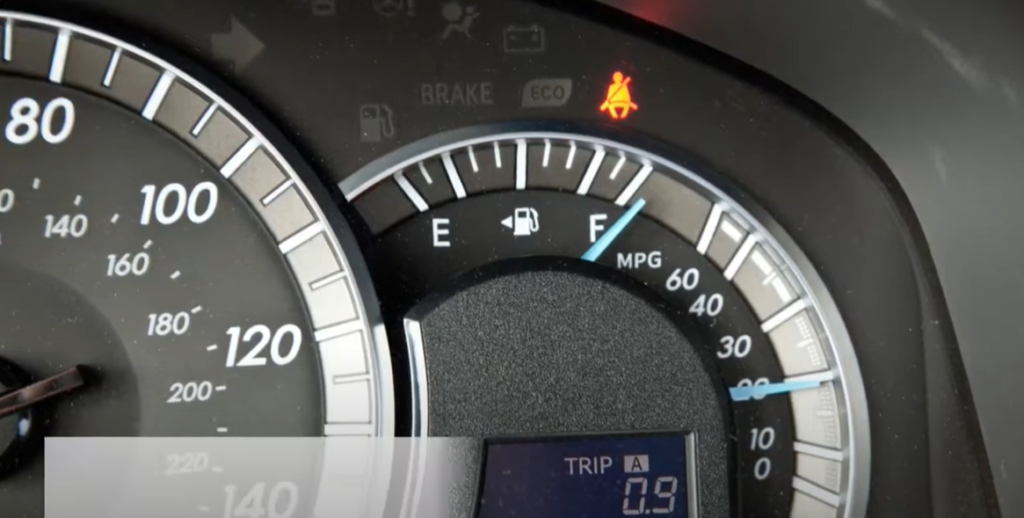
What is My “Black Tank?”
Your black tank is the smaller of the two tanks listed and holds your “black water”, which includes wastewater from the toilet.
The capacity for a black tank will also vary depending on its size and model, but it is usually less than the capacity of the gray tank. A typical black tank holds around 20 to 30 gallons, but some larger models can hold close to 40 gallons.
How Do I Dispose of the Water in The Black and Gray Tanks?
When your RV’s black and gray tanks are full, you’ll need to find a place to empty them. Many campgrounds have dumping stations for RVs, so you can drive up and use their facilities. But make sure you know the local laws about dumping before you do it.
It’s also important to note that your RV’s gray and black tanks should never be combined. This can cause a nasty mess, so it’s best to keep them separate when dumping.
Black Tank Flushing
This is especially important if you’ve been using the RV for an extended period of time and its black tank has been filling up with waste. Flushing the tank will help keep it clean and odour free.
There are a few different ways to empty an RV black tank.
- One of the most popular methods is to use a portable RV sanitation flush system, which attaches to the black tank and uses special chemicals and water pressure to empty it out.
- Another option is to use an RV macerator pump, which pumps water from your freshwater tank into the black tank, flushing any waste away.
How Long Can I Go Between Filling Up and Dumping My Tanks?
The amount of time you can go without having to fill up or dump out your tanks depends on a few things. One factor is the size of the tanks and how much water they can hold. If your tanks are large, then you can go for a longer time without having to fill them up or dump them out.
It’s important to keep an eye on your tank levels so that they don’t get too full. You also want to make sure that you don’t let your tanks go too long without being emptied, as this can lead to bad odours and even tank leaks.
How Do I Conserve Water in an RV?
If you want to conserve water while RVing, there are a few things you can do. One of the easiest is to take shorter showers and turn off the water when brushing your teeth or shaving.
You can also use reusable plates, cups, and utensils instead of paper ones that need to be thrown away after one use.
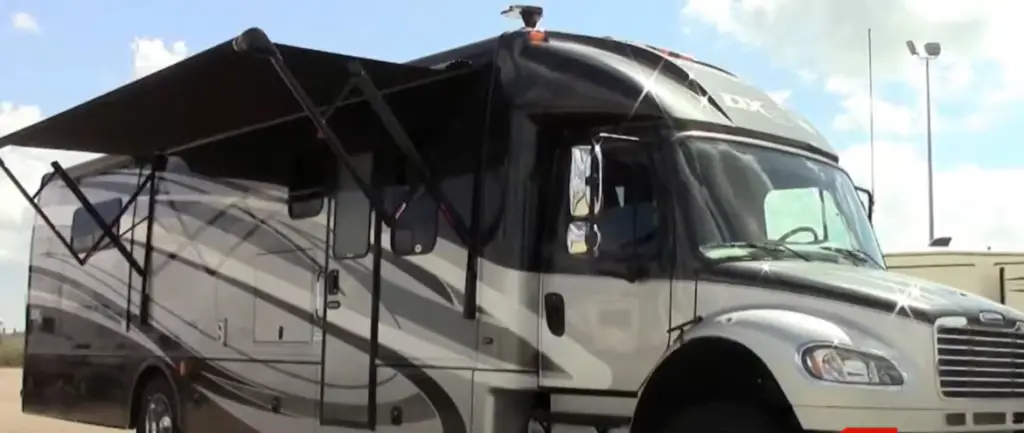
If you’re looking for even more ways to save water while RVing, consider installing a tankless water heater.
This type of system is much more efficient and can help conserve water by heating it as you need it. You can also invest in low-flow toilets and showerheads, which use less water than traditional models.
Winterizing Your RV Water Tanks
If you plan on using your RV during the winter months, then it’s important to prepare your tanks for cold weather. This will help protect them from damage due to freezing temperatures and keep them clean and odour-free when you’re ready to use them again.
To prepare your RV water tanks for winter, start by draining all the tanks, including the freshwater tank, gray water tank, and black water tank. Then add an RV-safe antifreeze solution to each one. This will help protect any remaining water inside the tanks from freezing in cold temperatures.
Finally, make sure that all of your tank valves are closed tightly and your hoses are stored away in a safe place. This will help ensure that your tanks and hoses stay in good condition while they’re not being used. [1]
How Many Gallons Of Gas Does The Average RV Hold?
The average RV holds around 30-45 gallons of gas. This is usually enough for a long road trip or extended period of time on the road.
The amount of fuel an RV holds can vary depending on the size and type of vehicle, but typically it will hold somewhere between 15-60 gallons.
It’s important to pay attention to the fuel gauge on an RV and make sure you fill up before it gets too low. This will help prevent any issues while travelling and help keep the vehicle running smoothly.
How Far Can a Class B Gas Tank Take You?
Class B gas tanks can usually take you at least 250-400 miles on a single tank of fuel. Depending on the size of the RV and how much weight it’s carrying, this distance may be longer or shorter.
It’s important to plan ahead when travelling in an RV so that you know where your next stop is and make sure there’s a gas station nearby. This will help prevent any issues with running out of fuel and ensure that you have enough to get where you need to go.
How Far Can Your Class C Tank Take You?
Class C tanks can usually take you between 300-450 miles on a single tank of fuel. Again, this distance may vary depending on the size and weight of the RV and how much fuel it’s carrying.
It’s important to plan your route in advance when travelling in an RV so that you know when and where you’ll need to refuel. This will help ensure that you don’t run out of fuel and have enough to get where you need to go. [2]
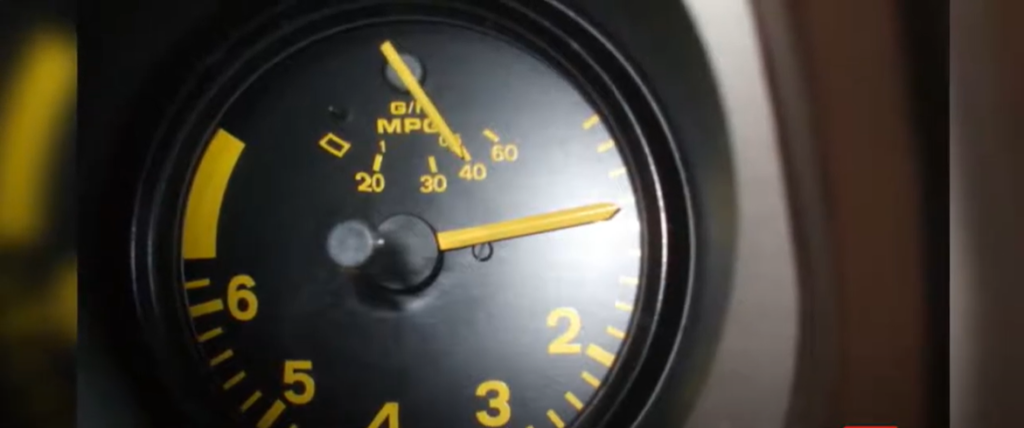
Diesel Vs. Gasoline RVs
When you choose an RV, you can usually choose between diesel or gasoline. Diesel RVs are more expensive at first, but they can get better gas mileage and offer more power than gasoline RVs. Gasoline RVs are usually cheaper and easier to take care of.
Which type of RV you choose will depend on what type of travel you plan to do and your budget. Both types have their advantages, so make sure to do your research before buying one.
How to Calculate Your MPG?
When calculating the MPG of your RV, there are several factors to take into consideration. These include things like the weight of your RV and any cargo you’re carrying, how fast you drive, and the type of terrain you’ll be driving through.
To get a better idea of what kind of mileage your RV will get, keep track of your fuel usage over a period of time and then calculate the average. This will give you a good estimate of how many miles per gallon your RV gets and help you plan for future trips. [2]
Improve Your Vehicle’s Performance
In addition to calculating the MPG of your RV, there are several things you can do to improve its performance. Make sure that your tires are properly inflated and that your vehicle is regularly maintained by a qualified mechanic.
You should also try to reduce any unnecessary weight in the vehicle such as extra cargo or items you don’t need for the trip. This will help reduce the amount of fuel your RV uses and improve its overall performance.
High-Quality Motor Oil
One way to make your RV run better is to use high-quality motor oil. This oil is designed to help reduce friction and makes it easier for your engine to run, which helps save fuel.
Make sure that you use the correct type of motor oil for your vehicle and follow the manufacturer’s instructions for how often to change it. This will help keep your vehicle running smoothly and efficiently for many years to come.
Keep it All Inside
Make sure that all of your RV’s parts and components are kept in good condition. This includes checking the hoses and seals for cracks or leaks and making sure the battery is charged and in working order.
Inflate Your Tires
If you want your RV to work better and use less fuel, you should inflate the tires. Check the manufacturer’s instructions to see how much air should be in the tires. Use a reliable gauge to check the pressure and add air if needed.

Tips for Saving Fuel While Travelling
There are some tips you can follow to help save fuel while travelling in your RV. Make sure that you plan your route to avoid highways and hills if possible.
Also, keep your speed down and try not to accelerate or brake quickly. This will reduce the amount of fuel needed for each mile travelled.
Finally, make sure that all of your RV’s components are kept in good condition, which will help reduce the amount of fuel it uses.
FAQ
What are the Different RV Classes?
RVs are typically divided into three classes: Class A, B and C. Class A RVs are the largest, typically with room for more than four people and lots of storage space.
Class B RVs are smaller in size and usually have enough space for two to four people. They’re ideal for weekend trips or short vacations.
Finally, Class C RVs are the smallest of the three classes and usually have enough space for two to four people.
How Many Gallons Does an RV Hold?
The amount of fuel an RV can hold depends on its size and type. Generally speaking, larger RVs will typically hold up to 100 gallons of fuel while smaller ones can hold up to 40 gallons.
It’s important to check your RV’s fuel tank capacity before leaving on a trip so that you know how much fuel you need to bring with you.
What supplies do I need for my black tank?
To properly maintain your RV’s black tank, you’ll need some basic supplies. These include a strong hose, a sewer adapter, deodorizer drops and specialised cleaning products.
You will also need to have the appropriate tools to empty and clean the tank such as a wrench or pliers. It’s important to read the manufacturer’s instructions and take proper safety precautions when dealing with your RV’s black tank.
How do I tell if the black tank is full?
Your RV’s black tank has a built-in indicator light that will tell you when it is full. This light typically flashes yellow to let you know when the tank needs to be emptied.
It’s important to check your owner’s manual for the exact location of this indicator light and for instructions on how to properly empty and clean the tank.
What is the best way to travel with an RV?
The best way to travel with an RV is to plan ahead and take your time. Make sure you know all of the regulations for each state, as well as any restrictions on campgrounds before you leave.
Also, check your routes in advance so that you can avoid highways and hills if possible. This will help save on fuel consumption and wear and tear on your RV. Finally, make sure you have all the supplies you need for a successful trip!
What tips can I use to save fuel while traveling with an RV?
There are several tips you can follow to save fuel when traveling with your RV. Make sure you plan your route in advance and avoid highways and hills as much as possible.
Also, try not to accelerate or brake quickly, as this will increase fuel consumption. Finally, make sure all of the components of your RV are kept in good working order. This will ensure that your RV is running as efficiently as possible, and you’ll use less fuel in the long run.
How often should I check my RV’s tires?
It is important to check your RV’s tires regularly for wear and tear. Check the pressure at least once a month, and make sure you have enough air in the tires before heading out on a long trip.
It is also important to inspect the tread for signs of excessive wear or cracking that could lead to a tire blowout.
Finally, make sure to rotate your tires every 5,000 miles or so. Doing this will help keep them in good condition and improve your RV’s fuel efficiency. Following these simple tips can help ensure that you get the most out of your RV’s tires!
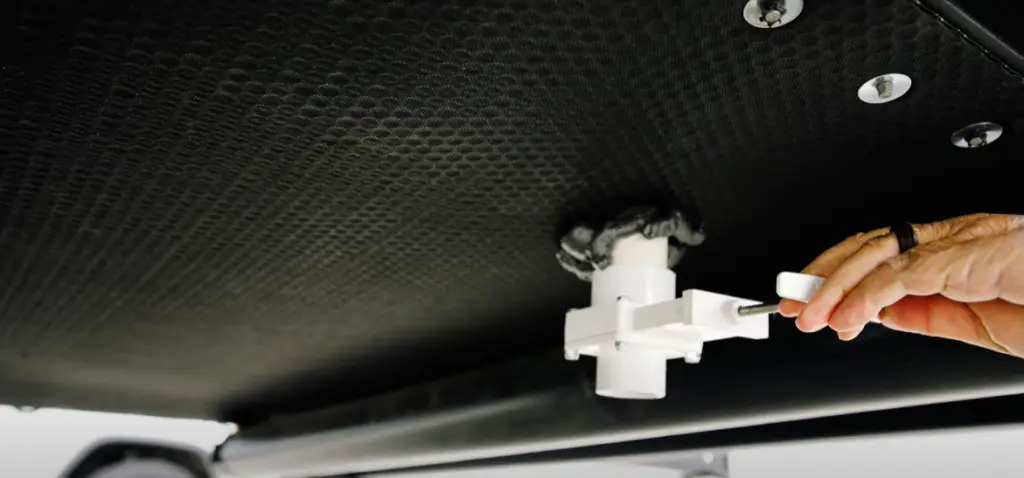
How do I maintain my RV’s roof?
Maintaining your RV’s roof is essential in order to ensure it stays waterproof and secure. Regularly inspect the roof for any signs of damage or wear and tear.
You should also clean the roof with specialised products at least twice a year to help prevent dirt, debris, and mildew from building up. If any repairs are needed, make sure to hire a professional who is experienced in RV roofing repairs.
Finally, always have a roof inspection done by a trusted professional before you set out on a long trip!
Does my RV need regular maintenance?
Yes, your RV needs regular maintenance in order to ensure it is running efficiently and safely. Make sure to check all the fluids and filters regularly and replace them as needed.
It is important to check the brakes, suspension, and tires for any damage or wear. Also, have a professional RV inspector check your RV at least once a year to make sure everything is working properly.
Do I need to winterize my RV?
Yes, it is important to winterize your RV every year in order to prepare it for cold weather conditions. This includes draining all of the water from the plumbing system, checking all hoses and seals for wear, and adding antifreeze as needed.
Does my RV need an air conditioner?
Most RVs are equipped with an air conditioner, however it is not essential to have one. If you plan on using your RV in the summer months, having an air conditioner can make a big difference in keeping your RV cool and comfortable.
Useful Video: How Many Miles Per Gallon Does An RV Get?
Conclusion
As you can see, the amount of water your RV can hold varies based on the size and type of your vehicle. If you’re ever in doubt, it’s always best to err on the side of caution and fill up sooner rather than later.
And remember, even if you have a freshwater tank, you’ll still need to ration your water usage carefully to make sure you don’t run out while you’re on the road. Now that you know how much water an RV holds, happy camping!
References:
- https://camperreport.com/how-many-gallons-of-water-does-an-rv-usually-hold/
- https://www.rvingknowhow.com/how-many-gallons-of-fuel-does-an-rv-usually-hold/





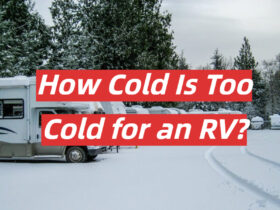
Leave a Reply